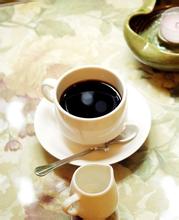Aroma, taste, aroma, characteristics Description

Salvadoran fine coffee is concentrated in Santa Ana in the west and Charantan Nango volcanic rock producing areas in the northwest. In recent years, almost all of the top 10 cup tests come from these two producing areas, with an altitude of about 900-1500 meters. Bourbon is the main one (accounting for 68%), followed by Pacas (accounting for 29%), and mixed Pacamara, Duraai and Cadura only account for 3%.
The coffee harvest lasts from November to March. All are hand-picked to harvest fresh coffee.
Salvador has a large number of buildings from the sixteenth century and religious buildings, many of which are decorated with sculptures from the seventeenth and eighteenth centuries, and many of which are striped with colored clay, reflecting the characteristics of the colonial period. Its overall character is described by a forest of monuments and a consistent vision. All this shows that El Salvador is a famous example of a city structured to fit a colony.
In El Salvador, Cusca-Bapa produces the finest coffee beans, which are slightly lighter in weight, aromatic, pure and slightly acidic. Like Guatemala and Costa Rica, coffee in El Salvador is graded according to altitude, with the higher the altitude, the better the coffee. The best brand is Pip, whose quality has been recognized by the American Organic Certification Society. Another rare coffee is Pakmara coffee, a hybrid of Pacas coffee and Malagojipi coffee, best grown in western El Salvador, adjacent to Santa Ana, near the border with Guatemala. Pakmara coffee is full of particles, but not too strong
Generally speaking, Salvadoran coffee inherits the mild quality of Central American coffee, which is soft, slightly sour and has a good sweetness. At the same time, it has its own characteristics: aromatic taste slightly sour, very soft; pure without impurities, taste balance is excellent; smooth feeling like cream chocolate is impressive; coffee in the mouth that kind of dense feeling makes coffee have a deep taste, long aftertaste
There are also buildings and houses of different styles built in the next two centuries. El Salvador is an important meeting place of European, African and North American civilizations from the 16th to the 18th centuries. It is also a model for the successful transplantation of Renaissance urban architecture to colonial cities. Bahia culture originated from African slave culture at that time, and African traditional music, dance, art, food and living habits can be found and seen in Bahia. In the squares of El Salvador, black women are often seen braiding small braids for non-black girls, and blacks are selling accessories, musical instruments and blankets that are popular with blacks. All these activities give exotic tourists a strong sensory stimulation. This ancient city is still the center of the development and dissemination of Afro-Brazilian culture today. If you're lucky, you'll get a chance to see the mysterious Candomble ritual.
Coffee fields are endless, and most of them are harvested mechanically to meet economic benefits. When 75% of the coffee fruit in the coffee garden turns red, the mechanical harvesting is started, followed by the same pre-operation of washing, which is transferred to the sink to remove the floating beans, sifting out the sunken beans, and then using a large pulp sifter to remove the pulp and remove the pods covered with pectin. The next stage is separate from the washing method: instead of moving the sticky pods to a tank for fermentation, they are moved to an outdoor drying field. Due to the dry climate in Brazil, the sticky pectin on the pods hardens in about a day. Then use a lot of manpower to turn up and down, so that the pod evenly dry inside and outside, so as not to regain moisture and stink, about two to three days with the help of sunlight and dry weather natural forces, the pod can reach a certain degree of dehydration. Then further drying in a dryer to reduce the moisture content to 10.5--12%, and then storing the pods in special containers for about ten days, further ripening, in order to stabilize the quality, before export and then grinding off the sheepskin (i.e. pods), take out the coffee beans, graded packaging.
Located in Santa Ana, a famous production area in the Apaneca Mountains at an altitude of 1500 meters, Himalaya Manor is one of the few manors managed by Aida Batlle. Bourbon is the main variety cultivated, Salvadoran fine coffee is concentrated in Santa Ana in the west and Charantan Nango volcanic rock producing areas in the northwest. In recent years, almost all of the top ten in the cup test come from these two producing areas, with an altitude of about 900-1500 meters. Bourbon is the main one (68%), followed by Pacas (29%), and mixed Pacamara, Duraai and Kadura account for only 3%.
The coffee harvest lasts from November to March. All are hand-picked to harvest fresh coffee.
Generally speaking, Salvadoran coffee inherits the mild quality of Central American coffee, which is soft, slightly sour and has a good sweetness. At the same time, it has its own characteristics: aromatic taste slightly sour, very soft; pure without impurities, taste balance is excellent; smooth feeling like cream chocolate is impressive; coffee in the mouth that kind of dense feeling makes coffee have a deep taste, long aftertaste
Many friends don't know El Salvador, a country located in northern Central America. Honduras to the north, the Pacific Ocean to the south, Guatemala to the west and northwest, and the Gulf of Fonseca to the east. The smallest and most densely populated country in Central America. Terrain to mountains, plateau-based, multi-volcanic, Santa Ana active volcano elevation of 2,385 meters, the highest peak for the country; north of the Lompa Valley; south of the narrow coastal plain.
El Salvador is tied with Mexico and Guatemala as the producer of Asa and Meldo, and is competing with other countries for the top one or two places in Central America. Highland origin, for the size of large coffee beans, fragrant taste mild. As in Guatemala and Costa Rica, coffee in El Salvador is graded according to altitude, with the higher the altitude, the better the coffee, and three grades: SHB (strictly high grown)= high, HEC (high grown central)= medium high, CS (central standard)= low; the best brand is Pipil, the Aztec-Mayan name for coffee, which has been approved by the Organic Certified Institute of America
Savanna climate. Plain area belongs to tropical rain forest climate, mountain area belongs to subtropical forest climate. The annual average temperature is 25-28℃, the annual precipitation in mountainous areas is more than 1,800 mm, and that in coastal areas is about 1000 mm. May-October is the rainy season.
Don't underestimate El Salvador's coffee production. In its heyday, it was the fourth largest coffee producer in the world, but decades of civil war almost brought down the coffee industry. Fortunately, the war stopped in recent years and the coffee industry recovered. The only benefit of the civil war for El Salvador was that farmers left their fields barren and could not catch up with the most popular Catimo train of cultivation in the past two decades, thus preserving the ancient bourbon and tibeka varieties. In other words, El Salvador still cultivated in the most traditional shade method, which had a positive effect on the aroma of coffee. In 2005, the Salvadoran hybrid Pacamara swaggered at the coe, leaving many international cup testers confused and wondering how to grade it. Unexpectedly, this hybrid bean not only broke the boundaries of coffee, but also expanded the visibility of Salvadoran coffee.
Important Notice :
前街咖啡 FrontStreet Coffee has moved to new addredd:
FrontStreet Coffee Address: 315,Donghua East Road,GuangZhou
Tel:020 38364473
- Prev

Fresh and rich fire phoenix manor fine coffee beans cultivation geographical location climate altitude profile
In Costa Rica, Arabica coffee trees are grown, improved, the quality of coffee beans is better and more stable; in order to facilitate picking, coffee trees are continuously pruned to maintain a height of about 2 meters; people eat coffee is the fruit of the seeds released by water brewing flavor. After harvesting green coffee beans, they must be removed from the peel, pulp, seed membrane and exposed to sunlight.
- Next

A brief introduction to the History and Culture of the Origin and Development of Fine Coffee beans in Renas Manor
Don't underestimate El Salvador's coffee production. In its heyday, it was once the fourth largest coffee producer in the world, but decades of civil war almost dragged down the coffee industry. fortunately, the war has stopped in recent years, and the coffee industry has come back to life. The only benefit that the civil war brought to the country of El Salvador was that the farmers left their fields barren and failed to catch up with the most popular Katimo sun-exposed cultivation train in the past two decades.
Related
- Does Rose Summer choose Blue, Green or Red? Detailed explanation of Rose Summer Coffee plots and Classification in Panamanian Jade Manor
- What is the difference between the origin, producing area, processing plant, cooperative and manor of coffee beans?
- How fine does the espresso powder fit? how to grind the espresso?
- Sca coffee roasting degree color card coffee roasting degree 8 roasting color values what do you mean?
- The practice of lattes: how to make lattes at home
- Introduction to Indonesian Fine Coffee beans-- Java Coffee producing area of Indonesian Arabica Coffee
- How much will the flavor of light and medium roasted rose summer be expressed? What baking level is rose summer suitable for?
- Introduction to the characteristics of washing, sun-drying or wet-planing coffee commonly used in Mantenin, Indonesia
- Price characteristics of Arabica Coffee Bean Starbucks introduction to Manning Coffee Bean Taste producing area Variety Manor
- What is the authentic Yega flavor? What are the flavor characteristics of the really excellent Yejasuffi coffee beans?

